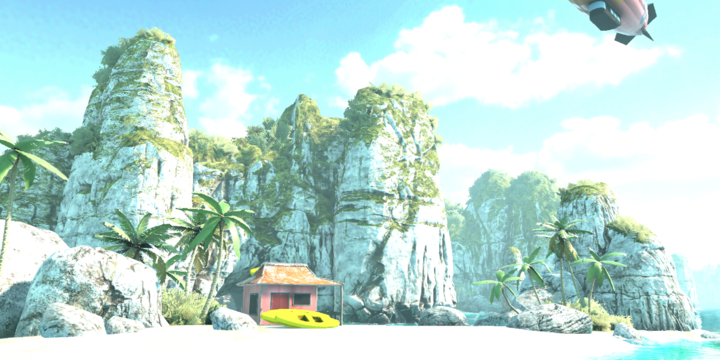2.6 KiB
| uid |
|---|
| urp-integration-with-post-processing |
Post-processing in the Universal Render Pipeline
The Universal Render Pipeline (URP) includes an integrated implementation of post-processing effects. If you use URP, it's not necessary to install an extra package for post-processing effects. URP is not compatible with the Post Processing Stack v2 package.
URP uses the volume framework for post-processing effects.
The images below show a scene with and without URP post-processing.
Note: URP does not support Post-processing on OpenGL ES 2.0.
Add post-processing to a new scene
To add post-processing to a new scene:
- Select a Camera, then in the Inspector window enable Post Processing.
- Add a GameObject with a Volume component in the scene. For example, select GameObject > Volume > Global Volume.
- Select the GameObject, then in the Volume component select New to create a new Volume Profile.
- Select Add Override, then select a post-processing effect Volume Override, for example Bloom.
Now you can use the Volume Override to enable and adjust the settings for the post-processing effect.
Note
The GameObject which contains the volume and the camera you wish to apply post-processing to must be on the same Layer.
Refer to Understand Volumes for more information.
Post-processing in URP for mobile devices
Post-processing effects can take up a lot of frame time. If you’re using URP for mobile devices, these effects are the most “mobile-friendly” by default:
- Bloom (with High Quality Filtering disabled)
- Chromatic Aberration
- Color Grading
- Lens Distortion
- Vignette
Note: For depth-of field, Unity recommends that you use Gaussian Depth of Field for lower-end devices. For console and desktop platforms, use Bokeh Depth of Field.
Note: For anti-aliasing on mobile platforms, Unity recommends that you use FXAA.
Post-processing in URP for VR
In VR apps and games, certain post-processing effects can cause nausea and disorientation. To reduce motion sickness in fast-paced or high-speed apps, use the Vignette effect for VR, and avoid the effects Lens Distortion, Chromatic Aberration, and Motion Blur for VR.

